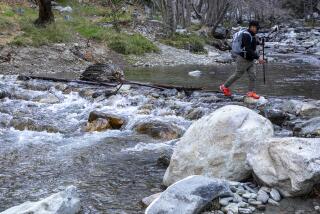SoCal: Need a wildflower fix? Point Mugu State Park is abloom
Point Mugu State Park is a moonscape no more.
Last year at this time it was a hot mess. The Springs wildfire that started May 2, 2013, burned from Camarillo to Pacific Coast Highway, scorching 12,500 acres of the state park’s 14,000 acres.
But now wildflowers in the Santa Monica Mountains parkland have sprouted from the scorched earth, even during one of California’s worst droughts. The popular La Jolla Canyon Trail is dotted with giant coreopsis, floppy yellow daisy-like flowers on a thick woody stem. Purple lupine and mariposa lilies have sprouted on hillsides and meadows, and mustard has added yellow streaks.
There’s still plenty of charred brush and a tang of charcoal in the air, but the greened-up hills show a park in recovery.
“Native plants ... won’t come up until there’s rain,” says Craig Sap, district superintendent for California State Parks. “Fortunately the seed bank is always there.” And, though November and December storms did not materialize, late-season rain did.
Why all the wildflowers after the burn? The thick chaparral that once obscured views is gone, though ceanothus and other shrubs are starting to come back. But the burning of the brush meant seeds that previously couldn’t compete for sunlight are able to pop up.
The only downside, Sap says, is the battle to remove fountain grass (a.k.a. Pennisetum setaceum), the willowy garden grass with a reddish plume. It too has come back and been invading the hillsides, sometimes with the help of hikers.
“People need to stay on trail or they’ll carry those seeds around,” Sap says.
More to Read
Sign up for The Wild
We’ll help you find the best places to hike, bike and run, as well as the perfect silent spots for meditation and yoga.
You may occasionally receive promotional content from the Los Angeles Times.


















